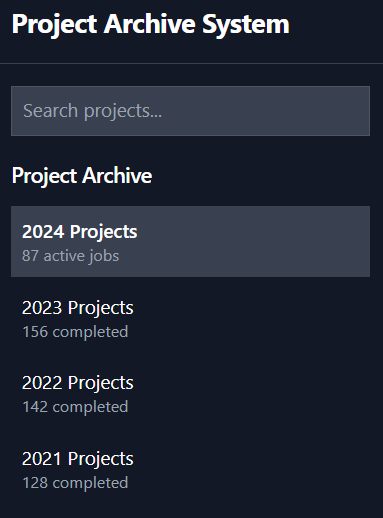Can AI be a new service line in your business?
I built out a full stack AI company to show you how to turn your company into an AI powerhouse
Y Combinator is an accelerator that is in the business of hits.
Airbnb, Stripe, Doordash are all companies that they were the original seed investor in.
They are typically way ahead of the meta trends in the world and so when they ask for new things to be built, you should pay attention.
Their recent request for startups got my attention
They asked for “Full Stack AI Companies” a term I had never heard about before.
Here’s a YC partner Jared explaining what the heck that is.
The traditional model is where you build an agent and sell it to existing law firms.
Going full stack is pretty intense.
Instead you stack your company full of lawyer agents and compete against the other law firms.
If you are confused, don’t worry, I am going to give you 2 examples and by the end of this post hopefully you will have some new ideas.
What the heck would staffing a company with AI agents look like?
Luckily, there are a couple of these early stage companies to look at and one is called MGX.
Stay with me, I know this looks absolutely ridiculous….
In this product you get a literal bunch of eggs to do your development.
I mean you might already have a bunch of eggs in your company so is this really any different?
Each of our eggs have roles.
Take Mike, he manages the team and wears ridiculously short ties.
Put them all together and each of these eggs is an AI agent.
So let’s say we want to build a new website, Alex the engineer writes the code.
Mike the team leader coordinates all of the different agents.
We have agents for:
The tech stack
The UI design
Testing and QA
If this feels all a bit like angry birds and not a real business, then yeah it’s pretty bloody strange to be honest.
Don’t worry this post gets better soon
I hope you haven’t fallen asleep yet because I’m going to try and make you money in a second.
I just need you to understand how this works (before you go off and fire your staff.)
Putting it all together, we get this strange multi layered crazy UI system that I have never seen before.
Let’s recap we have
Team members at the top, each with instructions
Each team member can do different tasks
Once a team member has finished one task, Mike (the team leader) can delegate and tell another team member to keep going
You can add as many of these team members as you want
You can also fire them all with no HR complaints
The results?
Well the angry birds are actually really good. It was quite crazy to see what they came up with.
I used them to make me a website called blogwritingtoolkit
This website makes it easy to put in screenshots of books for my blog posts.
It makes nice screenshots, with just a simple ctrl + c, ctrl + v function.
Or I can make it have complimenting colours.
I know it seems like a small product, but I just needed something quick and fast and I also wanted to test out the eggs.
I was really impressed.
It worked, it was amazing seeing all of the different eggs communicate back and forward and it really does feel like we are living in a strange futuristic world.
So now back to you and your business.
Let’s apply this to your business and see if we can’t make you a new service line, staffed with a bunch of eggs.

I used to be a civil engineer and so I’m going to imagine what this would look like in an engineering consultancy.
Step 1 of our formula is that we need some eggs with different roles.
Your job is to think about the different roles and functions in your business
A quick recap Sarah is our chartered engineer.
Sarah signs things off and will also go to jail if things go wrong.
We will train her to be really intense and basically quadruple check everything.
In exchange for the stress she will get a nice house and grey hair.
Michael is our senior engineer.
We will train him to be more relaxed than Sarah.
Michael is still deciding what he wants to do with his life.
The chartered engineering exam just seems like too much work for Michael and his house is already pretty good.
And on we go through the different roles.
The interesting thing here is that we can add roles like David who is a council planner.
This means he can be trained on all the standards of council and what is going on.
Alright let’s put this together and imagine what this looks like
Show don’t tell is good advice. I built this example and so everything you see here is part of the demo for you to understand the new world of AI agents.
Let’s imagine we have a new job that requires some beam calculations.
Emma is our fresh graduate ‘agent’ - only this agent can be trained and is actually ChatGPT under the hood so she is an absolute savant and knows everything in the world.
Emma needs a workspace and she works on a job.
Pause right there.
Emma can create folders
Emma can create Excel spreadsheets
Emma can even reference pdf files
Out of the box Emma is smart and so on day one she can do your calculations for you. We need to give her an area to do cool calculations.
Zoom out a bit and now we have a nice agent workspace forming.
But Emma can call on her mates.
So she might want to look at a reference job and as a result she can make a request to James who is our archivist.
That comes through in his chat window and James has access to all of your files and jobs you have done.
In fact James has full access to every job in the history of our business.
He has an entire archive system
Let’s zoom out to see the full view
But what about Council!?
While we are doing this check, Emma can ping a request to our internal council agent to make sure everything complies.
David has access to every standard of every region and all building codes. He can return specific documents and he won’t hallucinate.
Now we can get the agents to self check Emma’s work
After Emma is done with her file she can submit a request to Michael.
This pings Michael and he is activated.
We could train Michael contextually to understand how a senior engineer would check things.
If things are wrong, Emma would be given instructions on what to fix.
Can I just say to everyone reading, if verification keeps you up at night, don’t worry there is ways to solve that. Yes AI generates stuff but you can use multi agent checkers to ensure things are right. This is what I’m trying to show with this demo.
We also need to make money with this team, so we have an internal PM
Lisa can see the project is behind schedule and so she knows that she has to update the deadline and get that approved.
Lisa is across all projects, this her nice dashboard.

Welcome to the full stack world
Okay when I started to make this blog post and this prototype I didn’t expect it to actually work as well as it did to be honest.
It was a magic moment seeing files getting passed between each other and the agents were just solving and verifying the problem by themselves.
Like we started with eggs but actually this is a serious new technology that has a number of applications today. This isn’t in the far distant future.
Some of the things I wanted to demonstrate to you
This is why everyone is banging on about agents. Us software geeks are freaking out about how amazing these are and hopefully in a business context you can see why we are
Agents can pass information between each other
Agents can check things and if something fails, they can instruct the other agent what was wrong and why
Agents can embed real world information like your jobs or third party documentation like council standards
Agents can fulfill so many different roles
So what is the process to setting this up
If you wanted a basic version set up.
Let’s say you just wanted some team roles. You could have something like this built in one to two months.
This would then allow you to start testing and using it. Those months would be quite good for your business as in that period you would:
Map out your requirements
Map out the agent flows
Consider the different things you need
If you wanted to have your internal documents (add another 2-3+ months)
Your internal documents require a bit more planning and thinking. We need to embed them as a vector database and then label the features of the documents. Typically they are unstructured and all over the place so this can take some time.
I would time box this and say that you would get huge gains in the first couple of months and enough to keep your agentic team going.
The above would lay the foundation and then your agentic team would start to improve as we would have response data and feedback to work with
Trust me you are going to want to own this yourself in the world going forward. That will give you the most flexibility to build your exact pipeline for what you need.
My recommendation
I’d recommend that you pilot a multi agent full stack AI approach like this. For the sake of getting something like this setup in 1 month you are going to probably reimagine your whole business flow and unlock the AI capability sitting there today.
If I didn’t work as a consultant and I worked for you as your CTO this is what I would do. Pretty much every industry and business would benefit from this.
Think about it, you have a pretty capped downside and a quite unfathomable upside. Plus the tailwinds of agents are only growing. Andrej Karpathy said that it’s not the year of agents, it’s going to be the decade of agents.
You might as well get ahead of the curve.
Takeaway - the 8 step process to getting started with this
Step 1: Map the different roles and functions for your job
Step 2: Get a master register of external documents (standards/PDFs)
Step 3: Make a nice clean file of all your relevant project information. (Output reports)
Step 4: Set some success criteria
Step 5: Start with some simple tasks. What are small little jobs you can get the AI to do?
Step 6: Add your contextual documents
Step 7: Train your agent army
Step 8: Repeat the feedback loop































